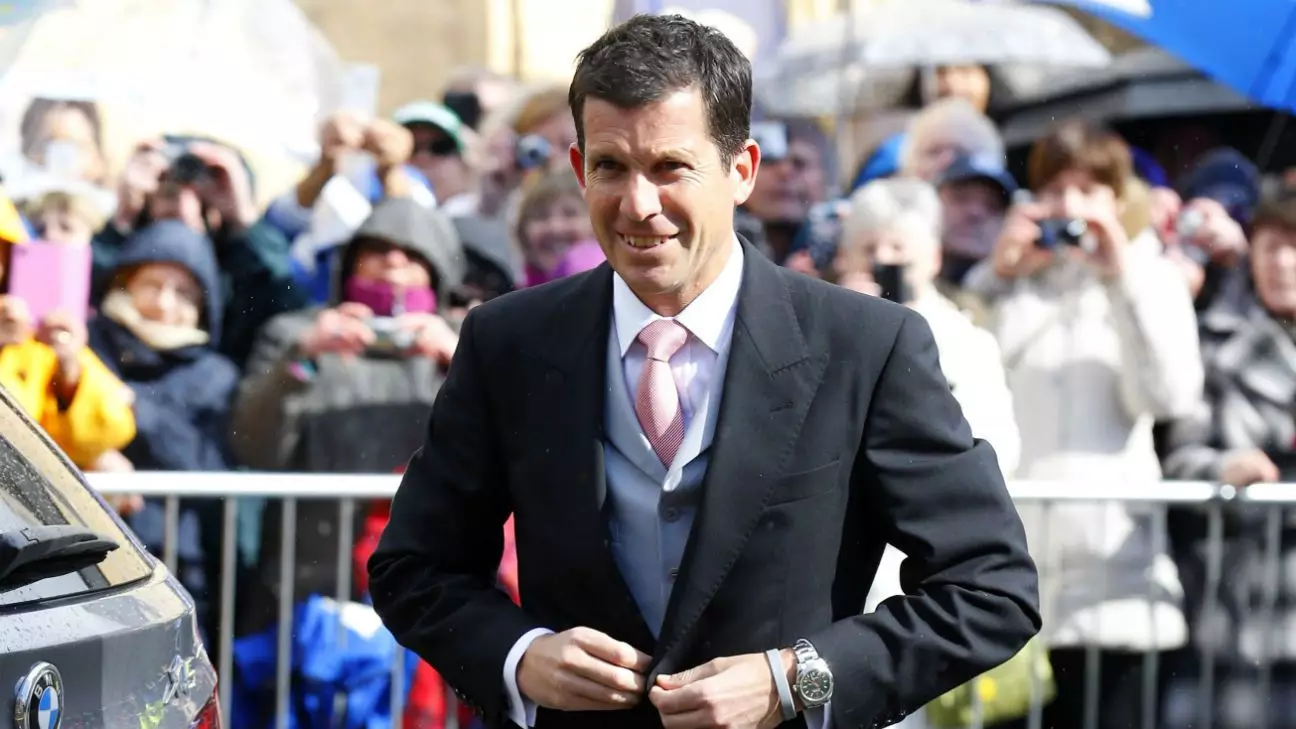The Laver Cup, an innovative repackaging of professional tennis into a team-based spectacle, continues to capture the attention of players and fans alike. Tim Henman, a former tennis star turned analyst, recently opened up about his exhilaration at being appointed vice captain for Team Europe at this year’s event in San Francisco, scheduled for September 19-21. This revelation transcends mere nostalgia; it highlights the shifting dynamics of professional tennis and the embrace of collaboration amidst individualism.
Henman’s first encounter with the Laver Cup was remarkable. Witnessing Roger Federer’s emotional farewell in 2022, he was struck not only by the high stakes of the competition but also by the electrifying atmosphere it generated. The adoration and solidarity evident among players, who traditionally compete as individuals, created a unique tapestry of camaraderie and rivalry—an aspect that Henman found “absolutely fantastic.” This eloquent expression encapsulates the essence of the Laver Cup: a celebration of both competition and unity in sports.
The Leadership Shift: A New Era for Team Europe
Alongside Henman, Yannick Noah has taken the reins as the captain of Team Europe, stepping into the shoes of Bjorn Borg. This leadership transition highlights the evolving nature of team dynamics in modern tennis. While Henman’s analytical prowess from his television work and experience as captain in other competitions will undoubtedly influence team strategy, Noah’s dynamic leadership style has the potential to invigorate the team. To succeed, they will need to foster a competitive spirit that respects the traditions of tennis while boldly navigating its future.
The tournament is also marked by changes in Team World, where tennis legends Andre Agassi and Pat Rafter step in to challenge Team Europe’s dominance. This shake-up not only adds an extra layer to the competition but also reflects a broader trend in tennis: the blend of generations and styles. Agassi’s focus on mental toughness and Rafter’s strategic insight may shape a formidable opponent for Henman’s European contingent.
Your Favorites vs. The Rest: Fan Engagement and Competitive Fire
One of the Laver Cup’s primary appeals lies in its ability to draw together the sport’s elite players into a cohesive unit. Imagine young prodigies like Carlos Alcaraz and seasoned warriors such as Alexander Zverev competing under one flag. Henman’s energy is palpable as he advocates for potentially adding Jack Draper to the squad—a promising talent who recently surged into the ATP top 10 rankings and claimed his first Masters 1000 title. This speaks volumes about the Laver Cup’s role as a launching pad for emerging players, setting the stage for tennis narratives that intertwine experience and youth.
Expressing a desire to use his “powers of persuasion” to include Draper reflects a crucial part of Henman’s new vice-captain role. This isn’t merely a game of tennis; it’s about building relationships and fostering an environment where players can thrive collectively. Such dynamics not only forge strong teams but also resonate with fans who yearn for fresh, intriguing rivalries mirroring classic sporting tales.
The Laver Cup’s Impact on the Tennis Landscape
Founded by Federer’s management company in 2017, the Laver Cup serves as a modern metaphor for tennis’s enduring legacy. It embodies a unique blend of passion, rivalry, and friendship, refreshing the game’s image while rooting itself in its rich history. Ambitious formats like these challenge the status quo, offering a template for future events where individual athletes can relinquish some independence for the collective joy of competition.
As Henman steps into this role, he introduces a unique perspective rooted in his experiences both as a player and a commentator. His enthusiasm for the Laver Cup transcends competition and reminds us that the essence of sports lies in unity and shared experiences. By highlighting the importance of teamwork in a sport often characterized by singular achievement, Henman and Noah stand at the forefront of a transformative movement, paving the way for the next generation of players while etching their own legacy in the annals of tennis history.

